Trogiomorpha
Bark lice
Emilie Bess and Kevin P. Johnson


This tree diagram shows the relationships between several groups of organisms.
The root of the current tree connects the organisms featured in this tree to their containing group and the rest of the Tree of Life. The basal branching point in the tree represents the ancestor of the other groups in the tree. This ancestor diversified over time into several descendent subgroups, which are represented as internal nodes and terminal taxa to the right.

You can click on the root to travel down the Tree of Life all the way to the root of all Life, and you can click on the names of descendent subgroups to travel up the Tree of Life all the way to individual species.
For more information on ToL tree formatting, please see Interpreting the Tree or Classification. To learn more about phylogenetic trees, please visit our Phylogenetic Biology pages.
close boxIntroduction
The suborder Trogiomorpha includes the families Lepidopsocidae, Psoquillidae, and Trogiidae, comprising more than 300 species in 37 genera. Trogiomorphs are distributed worldwide with the greatest diversity in the tropics.
Characteristics
Synapomorphies
- Female:
- Ventral and dorsal valves are strongly reduced or absent.
- External valve of gonapophyses is well developed and close to ventral midline of abdomen, forming the ovipositor.
- Subgenital plate is short, covering at most basal part of external valves.
General characters:
- Antennae generally have more than 20 segments, sometimes more than 50.
- Antennal segments do not have ringed sculpturing (annulations).
- Labial palpi have 2 segments: a minute basal segment and a rounded or somewhat elongated distal segment.
- Forewing pterostigma is not thickened; it is completely transparent or slightly opaque.
- Tarsi have 3 segments.
- Female:
- Subgenital is plate short, covering at most the basal part of external valves.
- Gonapophyses are reduced:
- Ventral and dorsal valves are strongly reduced or absent.
- External valve is well developed and hairy; it comes close to ventral midline of abdomen, forming the ovipositor.
Discussion of Phylogenetic Relationships
Monophyly of the suborder Trogiomorpha is strongly supported by the unique characters of the female genitalia (described above) and by molecular analysis including all three families (17 species, 15 genera; genes 18S & Histone3 nDNA, 16S rDNA; Yoshizawa et al. 2006).
References
Lienhard, C. and C.N. Smithers. 2002. Psocoptera (Insecta) World Catalogue and Bibliography. Muséum d'Histoire Naturelle, Geneva, Switzerland.
Mockford, E.L. 1993. North American Psocoptera (Insecta). Gainesville, Florida: Sandhill Crane Press.
Smithers, C.N. 1996. Psocoptera. Pp. 1-80, 363-372 (Index) in Wells A. (ed.) Zoological Catalogue of Australia. Vol. 26. Psocoptera, Phthiraptera, Thysanoptera. Melbourne: CSIRO Publishing, Australia.
Smithers, C.N. 1972. The classification and phylogeny of the Psocoptera. Memoirs of the Australian Museum 14: 1–349.
Yoshizawa, K., C. Lienhard, and K.P. Johnson. 2006. Molecular systematics of the suborder Trogiomorpha (Insecta: Psocodea: ‘Psocoptera’). Zoological Journal of the Linnean Society 146: 287–299.
Title Illustrations

| Scientific Name | Echmepteryx hageni |
|---|---|
| Location | Dixville, N.H. |
| Comments | 10/9/2007 |
| Specimen Condition | Live Specimen |
| Life Cycle Stage | adult |
| View | dorsal |
| Copyright | © Tom Murray |
| Scientific Name | Cerobasis |
|---|---|
| Location | San Pedro, Los Angeles County, California, USA |
| Size | 1.84 mm |
| Source | Photo#50137 |
| Source Collection | BugGuide.Net |
| Image Use |
 This media file is licensed under the Creative Commons Attribution-NonCommercial-NoDerivs License - Version 1.0. This media file is licensed under the Creative Commons Attribution-NonCommercial-NoDerivs License - Version 1.0.
|
| Copyright | © David Ellsworth |
| Scientific Name | Dorypteryx longipennis |
|---|---|
| Specimen Condition | Live Specimen |
| Identified By | Charles Lienhard |
| Sex | Female |
| Life Cycle Stage | adult |
| Copyright | © 2009 Albert de Wilde |
About This Page
Emilie Bess

Illinois Natural History Survey, Champaign, Illinois, USA
Kevin P. Johnson

Illinois Natural History Survey, Champaign, Illinois, USA
Correspondence regarding this page should be directed to Emilie Bess at
bess@inhs.uiuc.edu
and Kevin P. Johnson at
kjohnson@inhs.uiuc.edu
Page copyright © 2006 Emilie Bess and Kevin P. Johnson
All Rights Reserved.
- First online 09 October 2006
- Content changed 18 March 2009
Citing this page:
Bess, Emilie and Kevin P. Johnson. 2009. Trogiomorpha. Bark lice. Version 18 March 2009 (under construction). http://tolweb.org/Trogiomorpha/14450/2009.03.18 in The Tree of Life Web Project, http://tolweb.org/




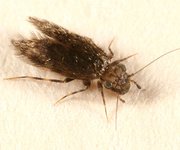
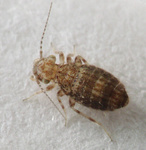
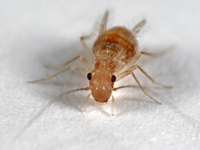
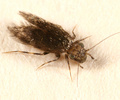

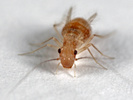

 Go to quick links
Go to quick search
Go to navigation for this section of the ToL site
Go to detailed links for the ToL site
Go to quick links
Go to quick search
Go to navigation for this section of the ToL site
Go to detailed links for the ToL site